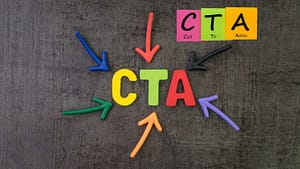Welcome to our digital marketing blog!
Today, we’re diving into one of the fundamental building blocks of successful marketing strategies: creating buyer personas.
Understanding your target audience is crucial for tailoring your marketing efforts effectively, and buyer personas are the key to unlocking this knowledge.
Let’s start by defining what a buyer persona is and why it’s essential for your digital marketing efforts. Then, we’ll walk you through the step-by-step process of creating detailed buyer personas to supercharge your campaigns.
What is a Buyer Persona?
A buyer persona is a semi-fictional representation of your ideal customer. It’s a detailed profile that encompasses demographic information, behavioral traits, goals, challenges, and pain points of your target audience.
These personas help you understand your customers better, enabling you to tailor your marketing efforts and content to resonate with them.
Why are Buyer Personas Crucial?
Improved Targeting:
Personas provide insights into who your customers are, allowing you to create content and campaigns that specifically cater to their needs and preferences.
Content Relevance:
When you understand your audience’s pain points and interests, you can craft content that addresses their concerns and engages them more effectively.
Enhanced ROI:
Targeted marketing efforts lead to higher conversion rates, better ROI, and more satisfied customers.
Now, let’s dive into the process of creating buyer personas for your business.
Step 1: Conduct Research
Start by collecting data about your existing customers and prospects. Key sources of information include:
Customer Surveys: Ask existing customers about their needs, preferences, and challenges.
Website Analytics: Use tools like Google Analytics to gather demographic and behavioral data.
Social Media Insights: Examine your followers’ profiles and engagement patterns.
Competitor Analysis: Study the personas of your competitors to identify gaps.
Step 2: Identify Common Characteristics
Look for patterns and commonalities among your audience. Some important characteristics to consider include:
Demographics: Age, gender, location, income, and job title.
Behavior: Buying habits, online behavior, and preferred communication channels.
Goals: What are their primary goals related to your products or services?
Challenges: What obstacles do they face in achieving their goals?
Step 3: Create Personas
Based on your research, develop detailed buyer personas. Give each persona a name, a profile picture, and a backstory. Here’s an example:
Persona Name: Marketing Manager
Age: 32
Location: XYZ
Job Title: Marketing Manager
Goals: Increase brand visibility, generate leads, and boost ROI.
Challenges: Limited budget, tight deadlines, and a need for ROI-focused solutions.
Step 4: Use Personas in Your Marketing Strategy
Now that you have your buyer personas, it’s time to put them to work:
Content Creation: Tailor your blog posts, social media updates, and email campaigns to address the specific needs and pain points of each persona.
Ad Targeting: Use your personas to guide your advertising efforts on platforms like Google Ads and Facebook.
Product Development: Align your product or service offerings with the preferences and goals of your personas.
Customer Journey Mapping: Map out the customer journey for each persona to identify touchpoints where you can engage and convert them.
By following these steps and incorporating your buyer personas into your digital marketing strategy, you’ll be better equipped to connect with your target audience on a deeper level.
Creating buyer personas is an ongoing process. As your business evolves and your audience changes, be sure to revisit and update your personas to ensure your marketing efforts remain effective and aligned with your customers’ needs.
With well-crafted buyer personas, you’ll be on the path to marketing success.
What are your thoughts about buyer’s personas? leave in the comment box



